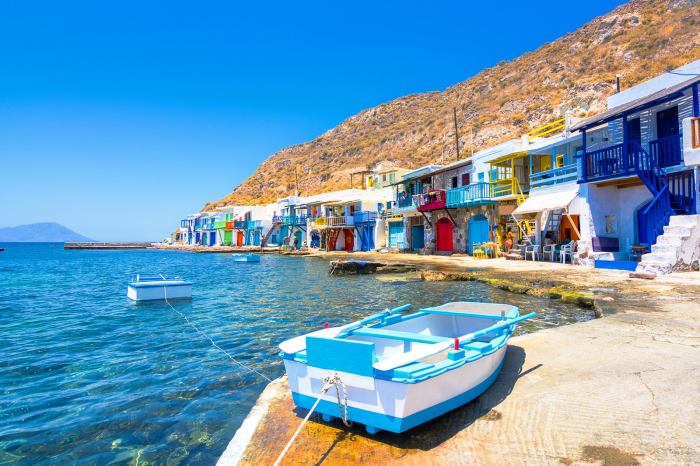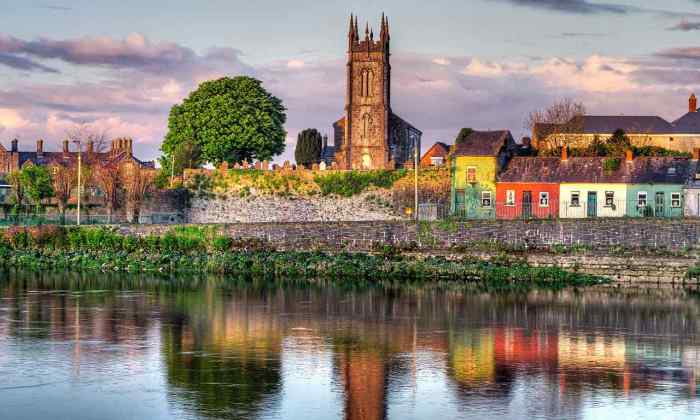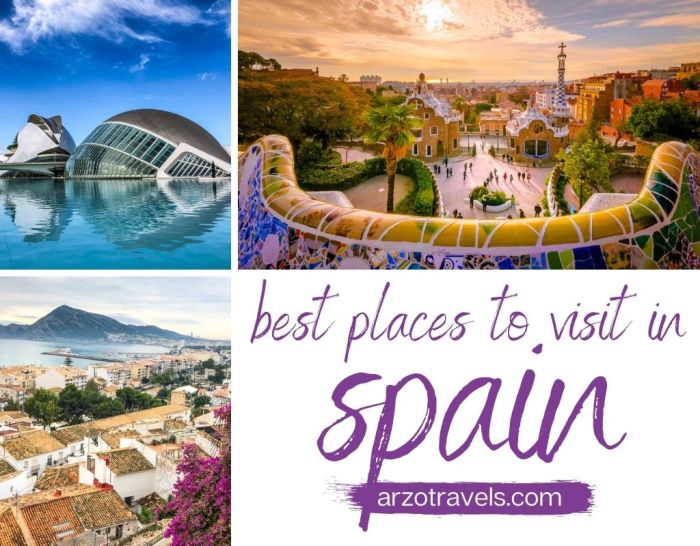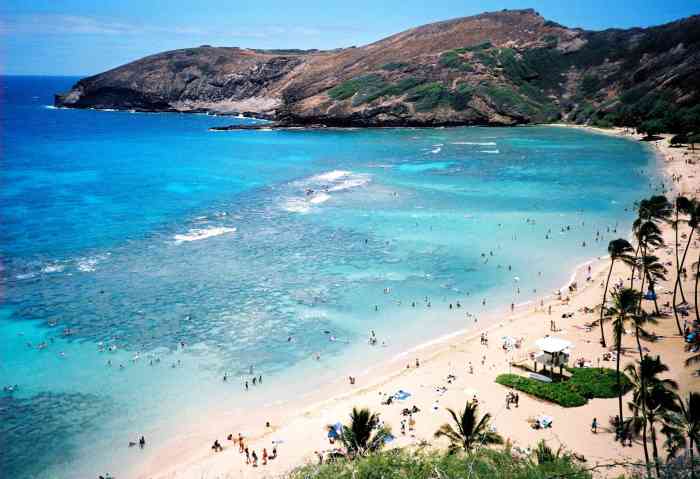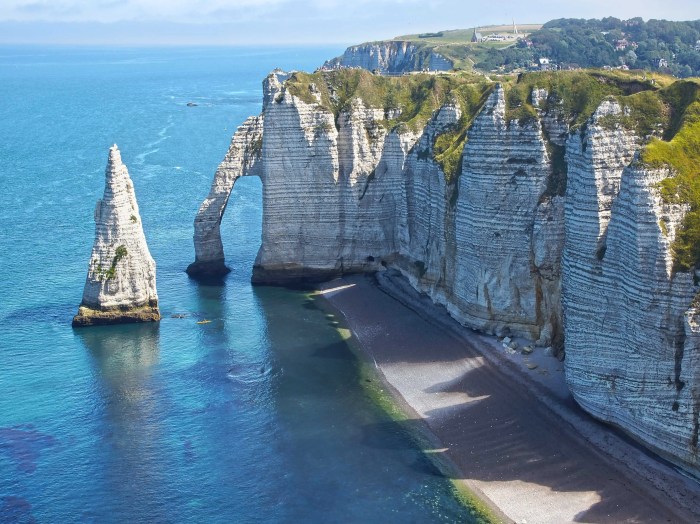Top 10 Places To Visit In Milos
Top 10 Places To Visit in Milos: Imagine a Greek island sculpted by volcanic forces, where white cliffs shimmer like a lunar landscape, ancient catacombs whisper tales of the past, and charming villages offer culinary delights. This is Milos, a hidden gem waiting to be discovered.
From the majestic cliffs of Sarakiniko to the pristine beaches of Papafragas, each location offers a unique perspective on the island’s rich history, diverse culture, and breathtaking natural beauty.
Prepare to be captivated by the otherworldly beauty of Sarakiniko, where white volcanic rock formations create a surreal landscape. Delve into the past at the ancient catacombs, remnants of a bygone era. Lose yourself in the charm of Plaka, a village brimming with traditional architecture and delectable cuisine.
And bask in the sun on the island’s pristine beaches, each offering its own slice of paradise.
Unveiling the Gems of Milos
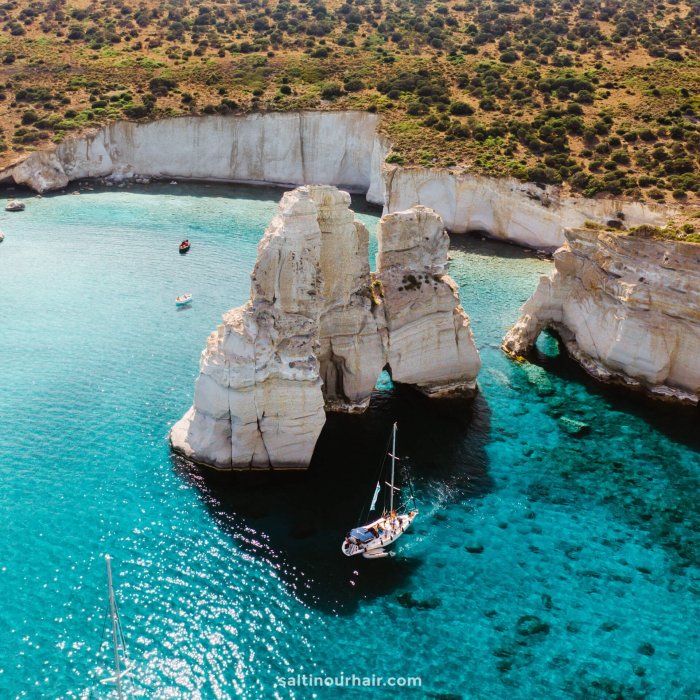
Milos, a captivating Greek island nestled in the Aegean Sea, beckons travelers with its unique volcanic landscape and hidden treasures. This enchanting island boasts a rich tapestry of history, diverse culture, and breathtaking natural beauty, promising an unforgettable experience. From the iconic Venus de Milo to the picturesque beaches and charming villages, Milos offers a diverse array of attractions that cater to every taste.
Prepare to embark on a journey that will unveil the secrets of this hidden gem and reveal the top 10 places that will leave you breathless.
Top 10 Places To Visit in Milos
Prepare to be captivated by the stunning beauty of Milos as we unveil the top 10 places that will leave you breathless. This carefully curated list highlights the island’s diverse offerings, from iconic landmarks to hidden gems, ensuring an unforgettable journey.
The Majestic Cliffs of Sarakiniko: A Lunar Landscape
Prepare to be transported to another world at Sarakiniko, a breathtaking natural wonder on the island of Milos. This unique beach is a mesmerizing sight, with its stark white volcanic rock formations resembling a lunar surface. The surreal beauty of Sarakiniko is a testament to the island’s volcanic past and the powerful forces that shaped its landscape.
The Formation of Sarakiniko’s Unique Geology
Sarakiniko’s dramatic landscape is a result of volcanic activity that occurred millions of years ago. The island of Milos was formed by volcanic eruptions, which created a variety of volcanic rocks, including perlite, a light-colored volcanic glass. Over time, these rocks were eroded by wind and waves, shaping the distinctive white cliffs and sculpted formations that characterize Sarakiniko.
The process of erosion has left behind a mesmerizing landscape of smooth, rounded rocks, creating a truly otherworldly scene.
Exploring the Lunar Landscape
Sarakiniko is a captivating destination for visitors seeking an adventure in a unique natural setting. The beach is ideal for photography, offering endless opportunities to capture the stunning white cliffs and dramatic formations against the azure Aegean Sea. The smooth, white rocks provide a perfect backdrop for creative shots, while the changing light throughout the day adds to the ethereal beauty of the landscape.
Swimming in the crystal-clear waters around Sarakiniko is a refreshing experience, offering a chance to cool off on a hot summer day. The waters are generally calm, making it a safe and enjoyable swim. For a more active exploration, consider hiking along the coastline, taking in the breathtaking views and discovering hidden coves and inlets.
The Ancient Catacombs of Milos
Delve into the depths of Milos’s history at the ancient catacombs, a testament to the island’s rich past. These underground burial chambers offer a glimpse into the lives and beliefs of the island’s inhabitants centuries ago.
The History and Purpose of the Catacombs
The catacombs of Milos were primarily used as burial sites during the Roman period, dating back to the 1st century AD. These subterranean networks served as a final resting place for the island’s residents, reflecting their reverence for the dead.
The catacombs provide a fascinating window into the burial practices and funerary traditions of the time.
The Architecture and Design of the Catacombs
The catacombs are characterized by their intricate design and craftsmanship. The burial chambers are often interconnected by narrow tunnels, creating a labyrinthine network. The walls are adorned with elaborate carvings, inscriptions, and symbols, reflecting the artistic sensibilities of the time.
The construction of these underground chambers demonstrates the advanced engineering skills of the ancient builders, who meticulously carved and shaped the rock to create these intricate burial spaces.
Archaeological Discoveries in the Catacombs
Archaeological excavations within the catacombs have yielded valuable insights into the lives and beliefs of the island’s past inhabitants. These discoveries include skeletal remains, funerary objects, and inscriptions that provide clues about the social, religious, and economic practices of the time.
For example, the discovery of ceramic vessels and coins offers insights into the trade and economic activities of the ancient inhabitants. The presence of jewelry and other personal items suggests the social status and wealth of the deceased. The inscriptions found on the walls of the catacombs provide information about the names, dates of death, and sometimes even the occupations of the individuals buried there.
These discoveries help to paint a vivid picture of the daily lives of those who lived on Milos centuries ago.
The Charming Village of Plaka: A Culinary Delight
Nestled atop a hill overlooking the Aegean Sea, Plaka is the charming capital of Milos, Greece. Its whitewashed houses, narrow cobblestone streets, and vibrant atmosphere transport you to a bygone era. Plaka’s picturesque setting is a perfect backdrop for a leisurely stroll, allowing you to soak in the island’s unique charm.
Culinary Delights in Plaka
Plaka is renowned for its delectable culinary scene, offering a delightful blend of traditional Greek flavors and fresh seafood. From cozy tavernas to trendy restaurants, there’s something to satisfy every palate.
Must-Try Dishes
The island’s bounty of fresh seafood is a must-try. You can savor dishes like grilled octopus, fried calamari, and fresh fish prepared in various ways, each showcasing the distinct flavors of the Aegean Sea.
- Milos’s traditional tomatokeftedes: These savory tomato fritters are a local delicacy, made with fresh tomatoes, herbs, and spices.
- Freshly caught fish: The island’s fishermen bring in a variety of fresh catches daily, ensuring a delicious seafood experience.
- Milos’s goat cheese: Made with local milk, Milos goat cheese is known for its creamy texture and tangy flavor.
Restaurants and Cafes
- Glaros: This traditional taverna is known for its fresh seafood, grilled meats, and friendly service. The restaurant boasts a picturesque terrace overlooking the harbor, offering stunning views of the Aegean Sea.
- To Kivoto: This charming restaurant offers a more refined dining experience, with a menu featuring innovative dishes made with local ingredients. The restaurant’s ambiance is elegant and sophisticated, perfect for a romantic dinner.
- Taverna Plaka: A popular spot for locals and tourists alike, this taverna offers a wide variety of traditional Greek dishes, including moussaka, souvlaki, and gyros. The taverna’s lively atmosphere and friendly staff make it a great place to enjoy a casual meal.
- Agali: For a taste of the local coffee culture, head to Agali, a charming cafe with a cozy atmosphere. Enjoy a cup of Greek coffee or a refreshing frappe while taking in the views of the surrounding village.
The Pristine Beaches of Milos: Sun, Sand, and Serenity
Milos is a haven for beach lovers, boasting a stunning array of sandy coves, volcanic shores, and secluded bays. Each beach offers a unique charm, catering to different tastes and preferences. Whether you seek sunbathing, swimming, snorkeling, or simply soaking in the tranquility of the Aegean Sea, Milos has a perfect beach waiting for you.
The Top Beaches of Milos
Here’s a glimpse into some of the most captivating beaches that Milos has to offer:
| Beach Name | Unique Features | Recommended Activities | Image |
|---|---|---|---|
| Sarakiniko | A lunar landscape with white volcanic rock formations and crystal-clear turquoise waters. | Sunbathing, swimming, exploring the unique geological formations, photography. | Imagine a white, almost blindingly white, beach with sharp, sculpted rocks, resembling a moon crater landscape. The water is a dazzling turquoise, and the sun casts a brilliant light on the scene. This is Sarakiniko, a truly unique beach experience. |
| Klima | Known for its charming “syrmata,” traditional boat houses built into the cliffs, offering a picturesque view. | Swimming, sunbathing, enjoying the picturesque scenery, exploring the nearby caves, taking a boat trip to nearby beaches. | Picture a small, sheltered bay with white sand and clear blue water. The main feature of this beach is the line of colorful, traditional boat houses, called “syrmata,” built into the cliff face. These charming structures create a unique and picturesque backdrop for a relaxing beach day. |
| Paleochori | A long stretch of golden sand with shallow, crystal-clear waters, ideal for families. | Sunbathing, swimming, snorkeling, enjoying water sports, dining at the nearby taverns. | Imagine a wide, sandy beach with soft, golden sand and shallow, crystal-clear water. This is Paleochori, a perfect beach for families with young children. The water is calm and shallow, making it safe for swimming and playing. There are also several beachside taverns where you can enjoy delicious Greek food and drinks. |
| Tsigrado | A secluded cove with turquoise waters and a dramatic rock formation that requires a short climb to access. | Swimming, sunbathing, cliff jumping, exploring the nearby caves, snorkeling. | Picture a small, secluded cove with crystal-clear turquoise water. To get to this beach, you need to climb down a short, rocky path. The reward is a beautiful, pristine beach with white sand and stunning rock formations. The water is perfect for swimming, snorkeling, and cliff jumping. |
The Ancient Theatre of Milos: A Stage for History
The ancient theatre of Milos, perched on a hillside overlooking the Aegean Sea, is a testament to the island’s rich cultural heritage. This remarkable structure, dating back to the Hellenistic period, has witnessed centuries of theatrical performances, public gatherings, and cultural celebrations.
Architectural Features
The theatre’s design showcases the architectural ingenuity of the ancient Greeks. Its semicircular seating area, known as the “cavea,” could accommodate a large audience. The stage, or “orchestra,” was positioned in front of the cavea, providing a space for actors and performers to showcase their talents.
The theatre’s acoustics were exceptional, ensuring that every word spoken on stage could be heard clearly by the entire audience.
Plays and Events
The ancient theatre of Milos served as a hub for theatrical performances, religious festivals, and political gatherings. It hosted a wide range of plays, including tragedies, comedies, and satyr plays, showcasing the talent of local and visiting actors. The theatre’s presence also played a significant role in the social and political life of Milos, providing a platform for public discourse and civic engagement.
The Vibrant Port of Adamantas: Top 10 Places To Visit In Milos
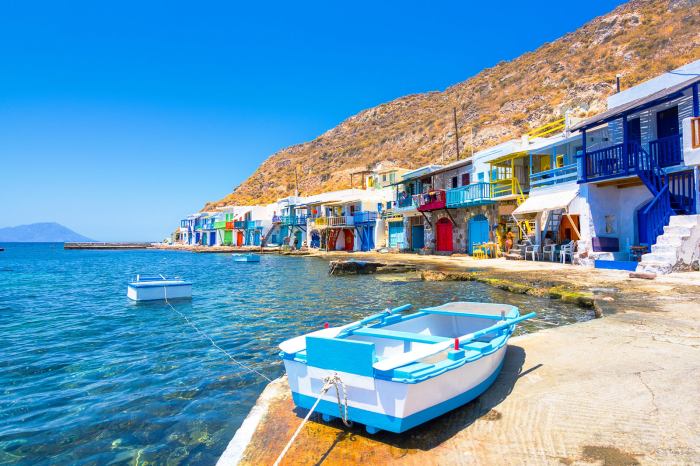
Imagine a bustling harbor teeming with activity, where the salty air carries the scent of the sea and the sound of laughter echoes through the streets. This is Adamantas, the main port of Milos, a vibrant gateway to adventure.Adamantas is more than just a port; it’s a lively hub that pulsates with the energy of island life.
The waterfront is a kaleidoscope of color, with colorful fishing boats bobbing gently alongside sleek yachts. The aroma of freshly caught seafood wafts from restaurants lining the harbor, inviting you to savor the local flavors.
Exploring the Port’s Charms
The port is a treasure trove of shops, restaurants, and cafes, offering a glimpse into the authentic spirit of Milos. You’ll find everything from traditional taverns serving hearty Greek cuisine to trendy cafes serving delicious coffee and pastries. Stroll along the cobblestone streets, browse through local crafts, and soak in the vibrant atmosphere.
A Gateway to Exploration
Adamantas is the starting point for numerous ferry and boat trips, opening up a world of possibilities for exploring the surrounding islands. Ferries connect Milos to other Cyclades islands like Santorini, Mykonos, and Naxos, offering convenient access to a variety of destinations.
You can also hop on a boat tour to discover hidden coves, secluded beaches, and volcanic landscapes that make Milos so unique.
The Hidden Gem of Kleftiko: A Coastal Paradise
Prepare to be captivated by the breathtaking beauty of Kleftiko, a secluded haven on the southwestern coast of Milos. This hidden gem is a testament to the island’s diverse landscapes, boasting dramatic white cliffs that plunge into crystal-clear turquoise waters, creating a truly enchanting setting.
Kleftiko’s name, meaning “thief” in Greek, speaks to its intriguing past. The area was once a notorious hideout for pirates who used its intricate coves and hidden grottos to conceal their treasures and evade capture. This history adds a layer of mystery and adventure to the location, making it even more alluring.
Exploring the Wonders of Kleftiko, Top 10 Places To Visit in Milos
Kleftiko is best explored by boat, allowing you to navigate its secluded coves and marvel at the dramatic cliffs from a unique perspective.
- Boat Tours:Numerous boat tours operate from the nearby port of Adamantas, offering a variety of options to suit your preferences. Some tours focus on swimming and snorkeling in the turquoise waters, while others include a delicious Greek lunch or a scenic sunset cruise.
- Snorkeling Spots:Kleftiko’s crystal-clear waters teem with marine life, making it a haven for snorkeling enthusiasts. Explore the vibrant coral reefs, encounter colorful fish, and even spot the occasional octopus or sea turtle.
- Scenic Viewpoints:For breathtaking views of Kleftiko’s dramatic cliffs and turquoise waters, venture to the nearby village of Klima. From here, you can enjoy panoramic vistas and capture stunning photographs of this natural wonder.
The Archaeological Museum of Milos: A Journey Through Time
Stepping into the Archaeological Museum of Milos is like taking a captivating journey through time. This museum houses a remarkable collection of artifacts and archaeological discoveries that offer a glimpse into the rich history and vibrant culture of the island.
From the ancient Cycladic period to the Roman era, the museum’s exhibits showcase the evolution of Milos’ civilization and its connection to the wider Aegean world.
The Museum’s Collection: Unveiling the Island’s Past
The museum’s collection is organized into thematic sections, each offering insights into different aspects of Milos’ history and culture. Visitors can explore the island’s prehistory, the influence of ancient Greece, the Roman occupation, and the island’s Byzantine and post-Byzantine periods.
Notable Artifacts: Treasures of Milos
The museum boasts a collection of notable artifacts that tell captivating stories about Milos’ past.
- The Venus de Milo: One of the most famous sculptures in the world, the Venus de Milo is a masterpiece of Hellenistic art. This iconic statue, discovered in 1820, depicts the Greek goddess Aphrodite, representing beauty, love, and fertility.
The Venus de Milo’s enigmatic smile and graceful pose continue to inspire awe and wonder in visitors.
- The “Milos Treasure”: This remarkable collection of gold jewelry, dating back to the 4th century BC, showcases the wealth and craftsmanship of the ancient inhabitants of Milos. The treasure includes intricate necklaces, earrings, bracelets, and rings, adorned with precious stones and delicate designs.
- The Milos Kouros: This imposing statue of a young man, dating back to the 6th century BC, is a significant example of early Greek sculpture. The Kouros, carved from white marble, stands as a testament to the artistic skill of the ancient Milosans.
- The Milos Boat: This well-preserved boat, dating back to the 5th century BC, provides valuable insights into the ancient maritime traditions of Milos. The boat, crafted from wood and featuring intricate details, offers a glimpse into the seafaring skills of the island’s inhabitants.
The Volcanic Landscape of Milos: A Geological Wonder
Milos, a Greek island nestled in the Aegean Sea, is a testament to the power and beauty of volcanic activity. Its diverse landscape, shaped over millions of years by volcanic eruptions and geological processes, presents a captivating spectacle for visitors.
The island’s unique geological features are a reminder of its fiery past, showcasing a mesmerizing blend of rugged cliffs, volcanic craters, and hidden caves.
The Volcanic Origins of Milos
Milos’s volcanic origins are evident in its distinctive landscape. The island was formed by a series of volcanic eruptions that began around 3 million years ago. These eruptions created a variety of volcanic formations, including lava flows, volcanic domes, and calderas, which have left their mark on the island’s geology and ecology.
The volcanic activity also deposited rich mineral deposits, which have been exploited for centuries, contributing to Milos’s economic development.
Volcanic Formations: A Showcase of Geological History
- Craters and Caldera: The island’s landscape is dotted with volcanic craters, remnants of ancient eruptions. The most prominent is the caldera of the ancient volcano, now partially submerged in the sea, which created the iconic bay of Klima.
- Lava Flows and Volcanic Domes: Lava flows from past eruptions have shaped the island’s coastline, creating rugged cliffs and rocky shores. Volcanic domes, solidified lava formations, rise above the landscape, providing panoramic views of the surrounding areas.
- Caves and Hot Springs: Milos is home to a network of caves and grottos, many of which were formed by volcanic activity. The most famous is the cave of Sykia, known for its stunning stalactites and stalagmites. The island also boasts hot springs, fueled by geothermal activity, which are said to have therapeutic properties.
Final Thoughts
From the ancient theatre to the bustling port of Adamantas, Milos offers a tapestry of experiences that will leave a lasting impression. Discover the hidden gem of Kleftiko, a coastal paradise with turquoise waters and dramatic cliffs. Explore the island’s history at the Archaeological Museum, where artifacts and discoveries reveal its rich past.
And finally, marvel at the volcanic landscape, a testament to the island’s unique geological history. Whether you seek adventure, relaxation, or cultural immersion, Milos promises an unforgettable journey.
FAQ
What is the best time to visit Milos?
The best time to visit Milos is during the shoulder seasons, from April to May or September to October, when the weather is still pleasant but the crowds are smaller. You can also enjoy a more budget-friendly trip during these months.
How do I get around Milos?
The best way to get around Milos is by car, as it allows you to explore the island at your own pace. You can also rent scooters or motorcycles for a more adventurous experience. Public buses are available, but they are less frequent and may not reach all areas of the island.
Are there any other islands I can visit from Milos?
Yes, Milos is a great base for exploring other islands in the Cyclades. You can take ferries to nearby islands such as Santorini, Kimolos, and Folegandros.
